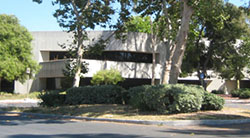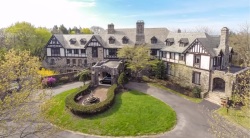
Twice-exceptional (or 2E) children are just recently beginning to receive attention in formal education. Once dismissed as not gifted at all, or unable to receive enrichment because their gift was masked or overshadowed by their disability, twice-exceptional students provide their own challenges and joys to parents and educators. While three to five percent of the student population in the United States may be classified as gifted, one-fifth of those are also battling some sort of disability.
A student who is twice-exceptional is simultaneously gifted and also faces certain disabilities or challenges. These can take the form of a physical disability or in the many forms of a learning challenge— including processing, dyslexia, ADD/ADHD, reading difficulties, ordyscalculia. At times, 2E students are on the autism spectrum, but professionals must take great care to avoid misdiagnosis in this case. Some students who are 2E are working with behavioral, informational, or medical issues.
It is important to work with school staff and trained professionals for evaluation and discussion of a student’s capabilities and potential; it can often take several months or even a few years for a student’s true capacity to emerge. Individual attention, especially at the diagnosis stage, can do wonders for a student who eventually manifests as 2E.
Being 2E in an All-Gifted or Average World
Formerly, students who were 2E were often doomed to either struggle with their disability or fight to keep up with classmates when they were misplaced. The common practice of tracking was often the culprit; many school systems placed students in one of two or three educational programs based on just a few standardized tests, which often spelled disaster for those who were 2E. For example, many students were tracked according to reading scores. If, for example, a student was a gifted reader or writer but had a learning disability rooted in spatial relationships, logical processing, or math, he or she would often struggle mightily in advanced mathematics courses when what was required was remedial assistance.
It can be a struggle to discuss a 2E student even with those who are involved in gifted education. Some hold to the fallacy that a gifted student cannot possibly also have a disability, particularly a learning one. 2E students are often particularly at sea; they don’t fully fit it with their gifted classmates, they don’t fully fit it with students who are also learning disabled, and their experience is certainly far removed from peers moving at an average pace.
Encouraging Twice-Exceptional Students
The standardized test scores of 2E students may look like a steep staircase or a dangling teeter totter, and they often leave even the most seasoned educational professionals stumped: How to reach this child who is simultaneously far ahead of and noticeably behind his or her classmates?
Throw in the difficulties associate with asynchronous development (the tendency of gifted children to develop at different rates than others their age), and 2E students are often critically in need of emotional and social support even more than those who are experiencing enriched classes alone. Early diagnosis and a balance of enrichment and skill development are essential to provide the best possible educational experience for a 2E child.
The National Association for Gifted Children emphasizes the necessity of goal-setting. Twice-exceptional students should be treated holistically, rather than as a jumble of test scores. Designing specific goals for them in areas in which they are gifted as well as struggling will assist them in balancing joy in their strengths and frustration with their weaknesses. Some 2E students struggle with distractions or become easily overwhelmed by their environment. If they understand that their thinking process is simply different—but certainly not worse than—their peers or even their gifted classmates, they may have increased patience and realistic expectations.
Supporting 2E Children at Home
Parents of twice-exceptional students can best assist their children and their at-school education team by becoming an advocate for their child. This means communicating frequently with faculty and staff and serving as a coach. It also means flexibility and understanding as often overworked educators attend to other students or take time to effectively assess how to serve their 2E child. Alerting educators to how your 2E child works best—for example, without distractions, or in a group—will assist them and getting to know how to help him or her meet their goals for the school year.
Sometimes, the biggest challenges twice-exceptional students face are psychological or emotional. They may feel out of place in all places. Assuring them that they are not “weird” or a problem to be solved can go a long way to helping them forge their own path. Reaching into their passions for examples or inspiration might help; for example, science-minded students might find comfort in the fact that several STEM pioneers, such as inventor Thomas Edison, likely had dyslexia.
Emphasizing to your child that he or she is neither a collection of accomplishments or diagnoses can help him or her develop a healthy sense of self-worth. This usually involves highlighting such qualities as patience, kindness, or sense of humor.
Individualized Education & Attention
Many parents of students who are 2E are surprised to learn that their students, once diagnosed with a federally recognized learning disability, are protected under the Individual with Disabilities Education Act (IDEA.) That means they are also eligible for an Individualized Education Program (IEP.) These are excellent opportunities to speak with psychologists, guidance counselors, and educators about your student’s strengths, limitations, and potential areas of growth.
Those with 2E children can also assist educators by occasionally touching base to let them know how their student is performing at home. Another way to help 2E students blossom outside of the classroom is to support them in non-school extracurricular adventures, such as workshops, classes, and museum visits. For example, if your student has a particular predilection to working with animals, he or she would likely flourish in a summer learning or volunteer program with a local zoo.






